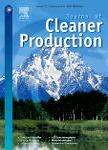版权所有:内蒙古大学图书馆 技术提供:维普资讯• 智图
内蒙古自治区呼和浩特市赛罕区大学西街235号 邮编: 010021

作者机构:Daqing Normal Univ Sch Elect & Mech Engn Daqing 163712 Heilongjiang Peoples R China Ctr Dis Control & Prevent Xinjiang Prod & Construct Corps Urumqi 830002 Xinjiang Peoples R China
出 版 物:《JOURNAL OF CLEANER PRODUCTION》 (清洁化生产杂志)
年 卷 期:2022年第367卷
核心收录:
学科分类:0830[工学-环境科学与工程(可授工学、理学、农学学位)] 08[工学]
基 金:Youth Foundation of Daqing Normal University [15ZR09]
主 题:Power-to-gas Gas-fires power plant Renewable energy Emission reduction Chance constrained programming
摘 要:The power-to-gas (P2G) technology is one of the primary solutions to the global warming crisis due to its rapid technological development. The environment is under the devastating influence of greenhouse gases such as CO2, leading to the integration of multiple systems and components on the supply and demand side, such as P2G, in coordination with renewable energy (RE) to tackle this problem. P2G can efficiently perform alongside gas-or coal-fired power plant to accomplish the carbon recycling process. The primary energy source for P2G is surplus RE which is easily accessible. In this article, the proposed model uses an on-site carbon capture, which has the advantage of preventing CO2 from being transported to distant areas. The recycling process of the carbon is fulfilled through water carbon capture, water electrolyzer and methanation facilities. The whole goal of this system is to use the surplus wind energy to convert CO2 to CH4, resulting in excessive natural gas as fuel and less carbon emission. The gas flow in mole value for input/output is considered to model the energy conversion and relations between devices alongside power and heat flows. The mathematical formulation of all devices oper-ating range is considered to model the proposed energy system realistically. This model has the ability to reduce carbon emission and wind curtailment significantly. Moreover, in the case of measuring risk, chance-constrained programming (CCP) is implemented in the model to enhance the decision-making strategies. Various confidence levels control the CCP;decreasing it will result in a more risk-taker approach and less conservatism. According to the results, the CO2 will be decreased to 32% when using P2G. Implementing P2G and two gas storages will reduce the carbon emission to 39%. Moreover, decreasing confidence level from 100% to 75% results in 34% carbon reduction for a single power plant.